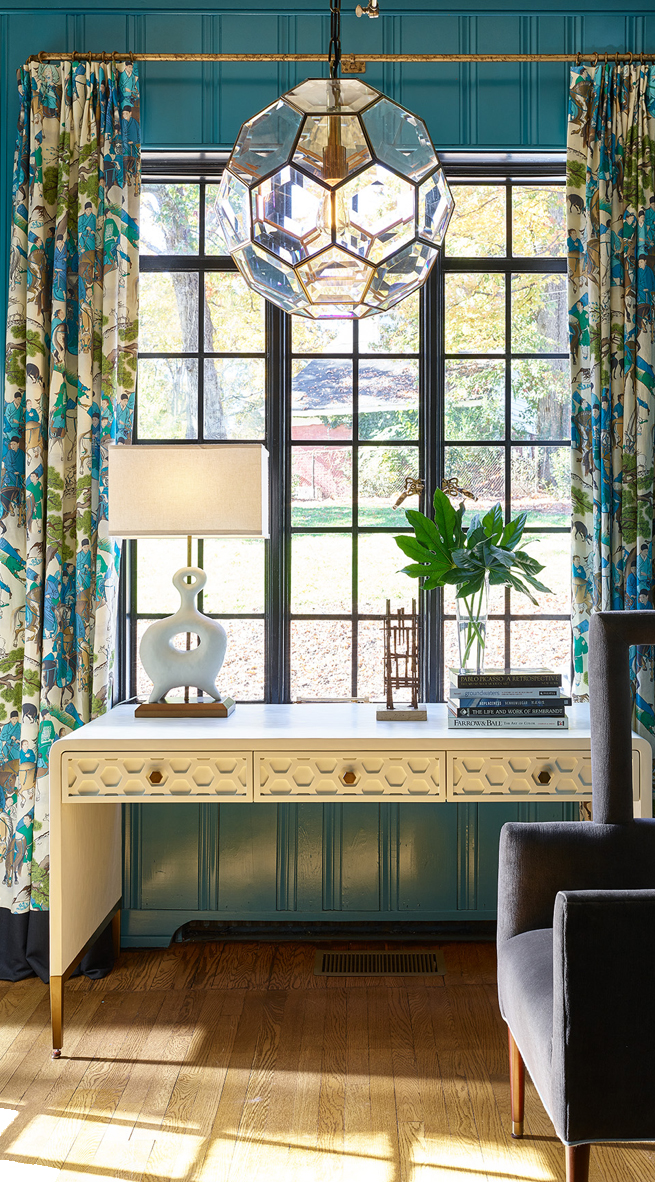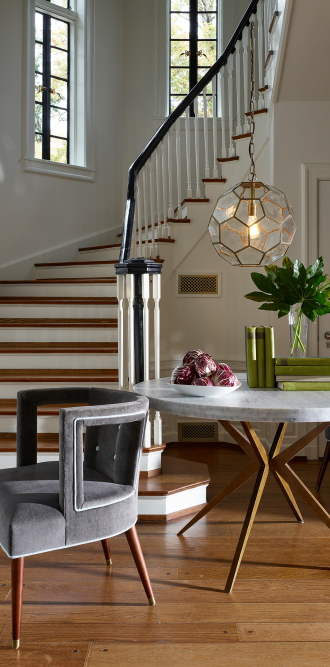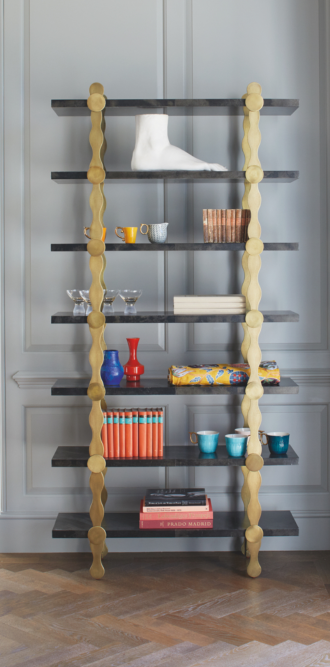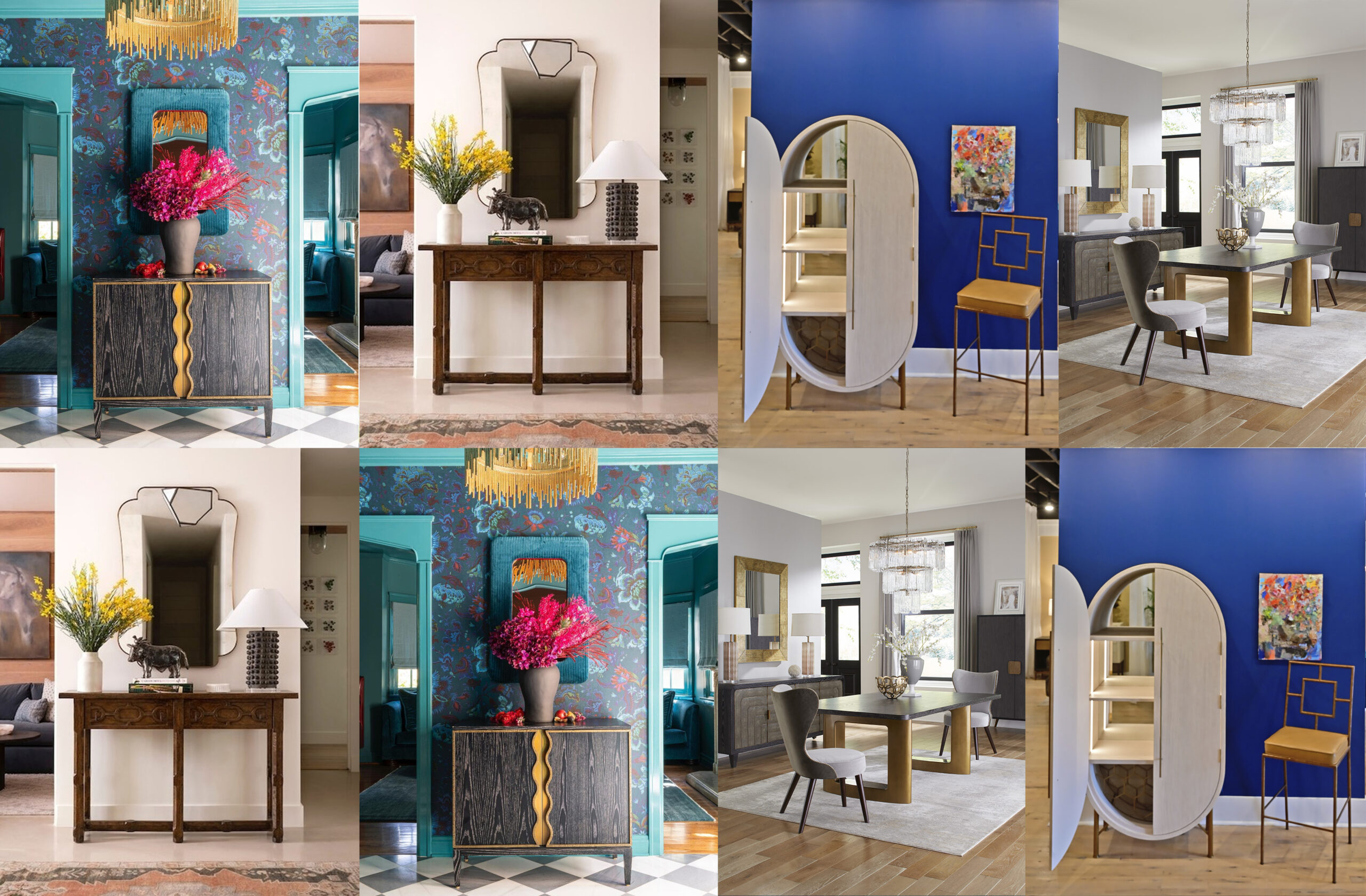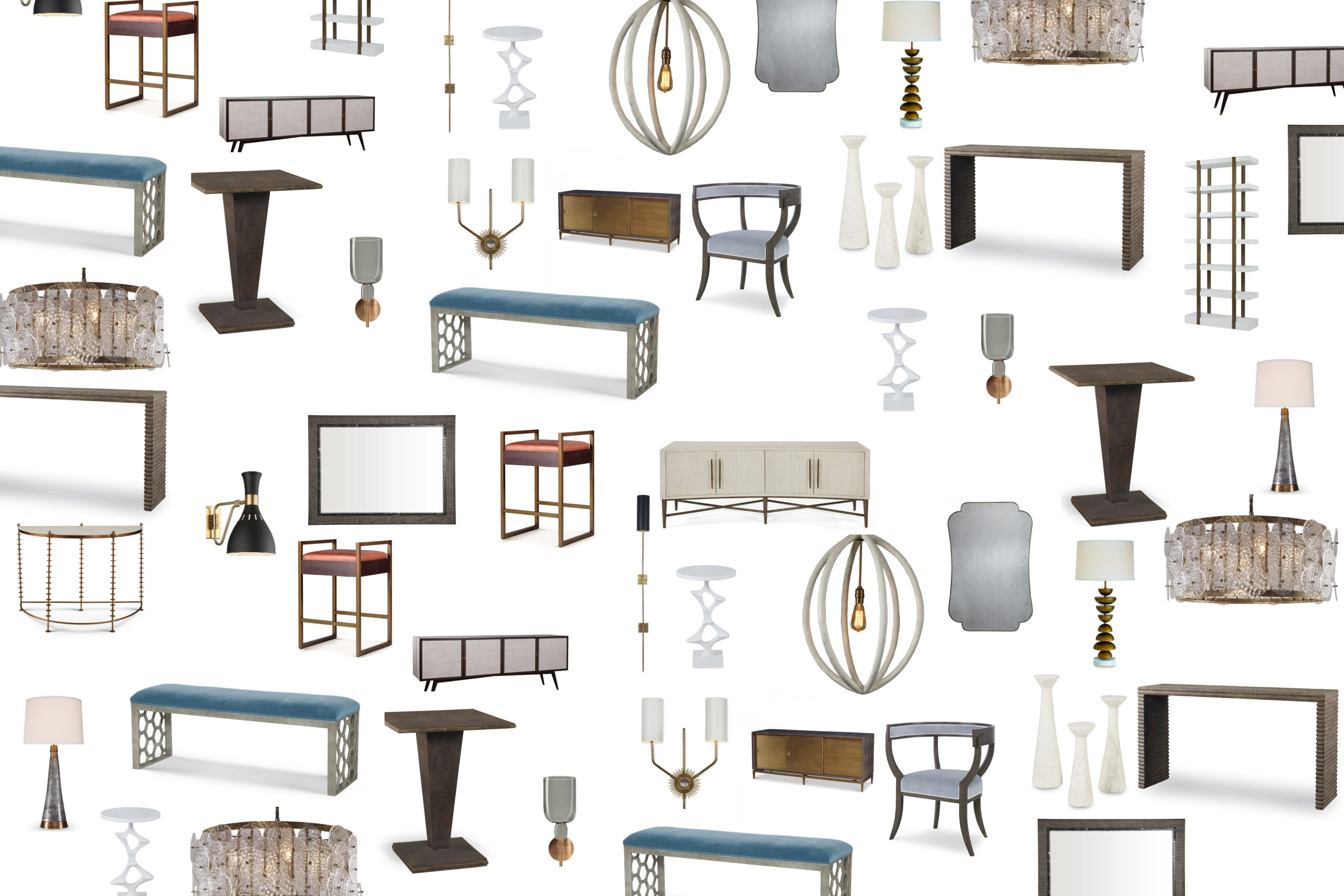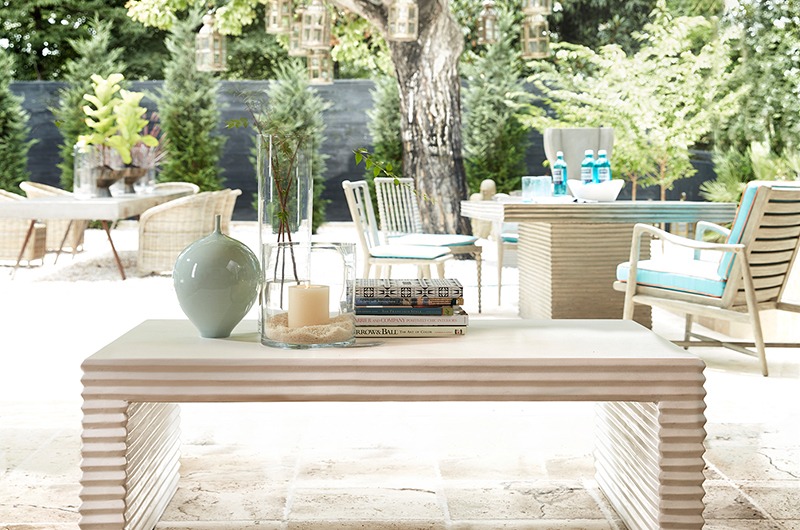Colorful, adjective
“Having striking colors”
The definition of colorful is pretty straightforward. In interior design, however, it couldn’t be more subjective. For you, a dream colorful living room design might be soft pastels in 10 different colors paired with curved furniture. But, for the next person, it may be an assortment of neon hues and edgy angles. There are a lot of ways to be colorful and design a space that’s the perfect fit for any client.
Learn more about key factors to consider when designing a living room and using colorful furniture to do it.
Things to Consider First
Statistically, we spend a lot of time in the living room. Some estimates put the number at over four hours a day. Next to the bedroom (and home office in some cases), it’s probably the most lived-in room of the house. Knowing that, it’s important to take some things into consideration before beginning a colorful living room design.
Is It Just a Living Room?
Over the last two years, many living rooms have become more than a place to lounge and rest. It’s a school, an office, a meeting room, and yes, it’s still a living room. For multi-use living rooms or smaller spaces like apartments, it’s important to consider what else that space may be used for. Large, colorful living room furniture might be great for a family gathering place, but not as much for the backdrop of a video meeting.
How is the Lighting?
For rooms with large windows, lighting may not be a big factor. But for rooms with less lighting, it is paramount to choose lighting that enhances the room and showcases a brighter design. Before considering a colorful couch or loveseat, identify areas where lighting is needed and have some ideas handy on how to add it.
What’s The Goal?
Designing a colorful living room is different from one person to the next. It comes down to personality, of course, but also the purpose. For homes where the living room is a place of rest and relaxation, a way to unwind at the end of the day, neon colors reminiscent of the 1980s may not be ideal. In contrast, a living room for a family with energetic children, pets, and a place where fun memories are made likely wouldn’t benefit from a more subdued, diverse color palette.
It’s important to understand how the room will be lived in and what colors best work with the space before you even begin shopping for colorful living room furniture and creating idea boards.
1. Go Vibrant
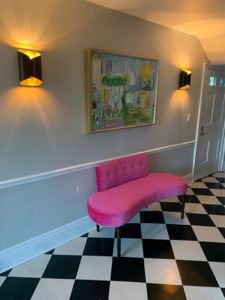
Neutral colors have a purpose, but when designing a colorful, modern room, at best they only enhance the bold items in the rest of the space. Choose vibrant colors for your sofas, chairs, and casegoods. Or, alternatively, stick with a single prominent item with a unique living room design. For example, Stephanie Sigg of CD Interiors chose the Cassis Bench to accent the front entrance of a New Canaan home. The vivid pink bench and checkered floor are striking—and fantastic—choices for this space.
Products from the image:
Cassis Bench
2. Explore Prints
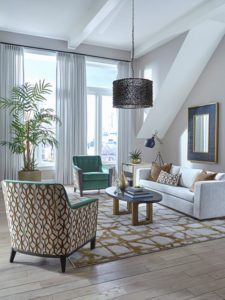
Despite more pronounced colors being a popular choice in 2022, some people prefer neutral colors. Still, you can liven up a room by adding colorful prints as a focal point to almost any living space. In this living room, there are numerous patterns. From the throw pillows to the chandelier, the neutral colors in the room enhance the patterns, and the eye-catching aspects of darker colors.
Products from the image:
Banbury Sofa, Richmond Mirror, Port Merion Drum Chandelier, and Lancaster Coffee Table
3. Add Some Green
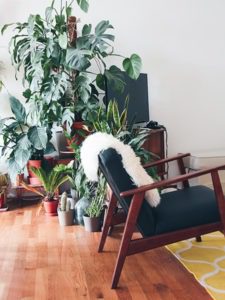
Vibrant and colorful living spaces can be created with plants. They aren’t only beneficial to the indoor environment, they can add a fresh green color to any room. In some cases, they enhance living spaces with reds, pinks, or even have a metallic silver shine. We talk more about the benefits, as well as the variety you can choose from, in this article.
4. Go Back to The Basics
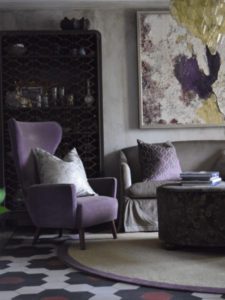
Colorful doesn’t necessarily mean bright. For more mature and serious luxury designs where color is called for, sticking with a few distinct, basic colors can be a colorful style in and of itself. Combine basic colors with a modern dark aesthetic and you can get a design that is both colorful, dark, and sophisticated. We love how designer David Anthony Chenault used rich, dark colors and our Custom House service to create a colorful living space in this Alexandria home.
Products from the image:
Juno Chandelier, Granta Chair, and Prades Tall Cabinet
5. Leverage Understated Color
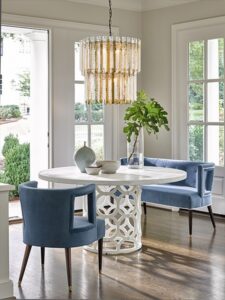
Many designers and clients think of vibrant, diverse colors that are loud and busy But, a colorful design can also be understated and enhanced by the right balance of neutrals and whites — and with the right modern style. In the image to the right, many of the elements we’ve already discussed are pictured. Patterns enhance the eye-catching blue seating while the tabletop plant adds a pop of green.
Products from the image:
Eliza Chair, Eliza Loveseat, Wolfgang Dining Table Base, and Rabanne 2 Tier Chandelier
6. Decorate Sparingly
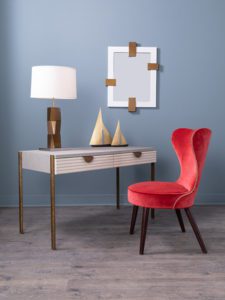
Almost half of the U.S. workforce is remote at least part of the time. This means that we spend a lot of time in a home office or the living room. Whether clients are on Zoom or just need a comfortable, yet sophisticated place to work, adding energy to a room is important. One way to create a colorful living space is to decorate sparingly, use only a few colors, and choose one obvious, fashionable focal point. The best example of this isn’t a living room, but this office space. Notice how the colorful chair serves as the focal point.
Products from the image:
Hartley Desk, Maribella Chair, Spiro Table Lamp, and Sussex Mirror
7. Decorate Liberally
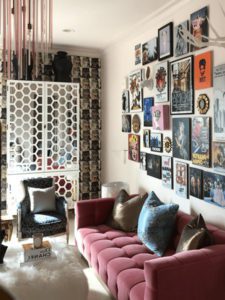
In contrast to a minimalist approach, consider adding a lot of variety to a room. A mashup of styles, colors, textures, and patterns can create a truly eclectic living room.For creative personalities that find inspiration from a less orderly environment, this is perfect. Kim DeBrock with K.D. Designs designed this living room for a client with a “funky vibe” and she certainly captured it.
Products from the image:
Wilhelm Tall Cabinet
Frequently Asked Questions About Designing a Colorful Living Room
Browse some of our most frequently asked questions about how to design a living room with colorful furniture, and come up with some fresh design ideas.
What are the trending living room colors?
For 2022, bold colors are a popular choice for the living room. Soothing greens, primary color focal points, a variety of soft pastels, and warm reds and browns are becoming more in demand.
What are some living room design ideas for 2022?
Using opposing colors, mirrors, and patterns are all growing in popularity as people strive to create a fun and energetic environment at home. Consider an eclectic approach with different styles, textures, and a diverse color palette for your 2022 designs.
What’s the most popular color?
Blue seems to be the most popular color choice for most people, followed by green, red, and purple. It isn’t surprising considering that all four colors have a vast variety of shades that either flatter a focal point or serve as the center of attention.
How do you decorate a bright room?
Aside from utilizing more vibrant colors with fabrics and furniture, adding flashy art or large crystal chandeliers, and using paint to highlight an accent wall or the ceiling can all add more color to a living room.
Which color combinations are best for a living room?
While this depends on personal preference, for those looking for a strong contrast, consider combinations like crimson and sage or a vivid green and tangerine. For particularly vibrant living rooms, neon pink and a bright turquoise can create a one-of-a-kind design.
How do you add color to a white, gray, or greige room?
The best thing about neutral colors is that they go with anything. For a sharp contrast, consider adding darker colors. Rich, dark blue seating and a dark brown or black storage cabinet, for example, offer a strong contrast to those neutrals. For a more subtle, softer contrast, consider pastels for furniture and lighting that create a diffused effect.

